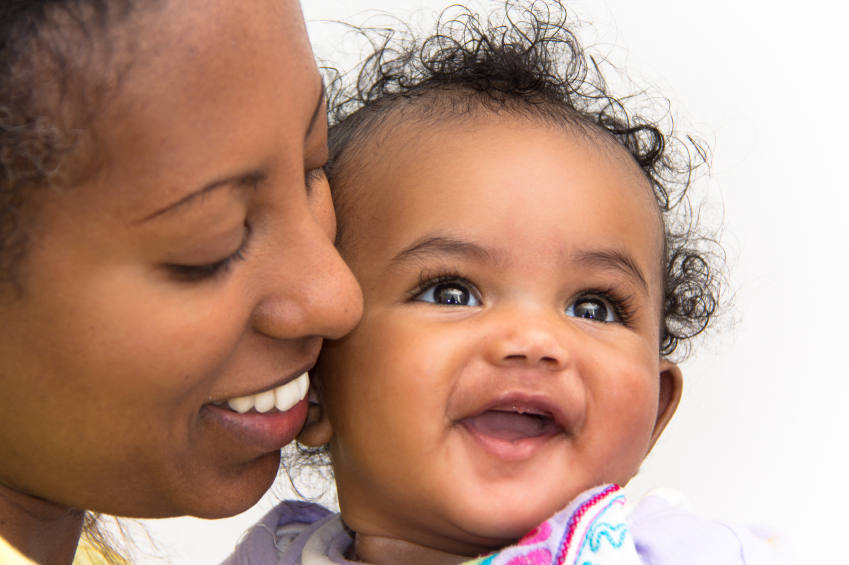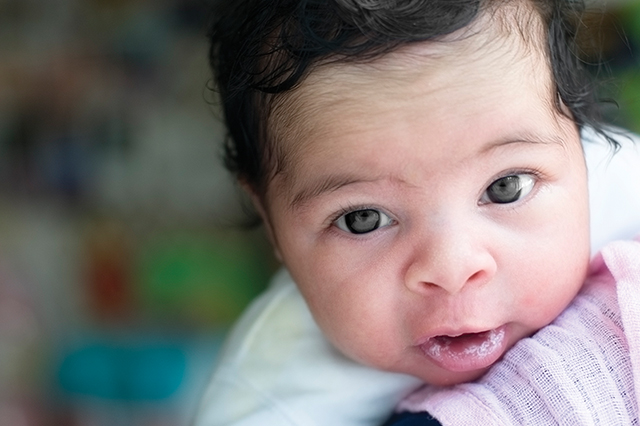My name is Wintra Cain. In case you were wondering, I was born in a blizzard, that’s how I got my name. I am currently employed as an Early Childhood Specialist for the Early Head Start program in Hillsdale County, Michigan. I have a Bachelor of Science degree in Psychology with an Infant Mental Health endorsement, level II. I have been working as a home-visitor with children and their families for the past 16 years. I am very grateful for the topic of discussion in this month’s Infant Crier. Substance abuse is very near and dear to my heart.
Brent was attending a party at a home he had never been to before. He had just finished “smoking a boat” of meth, in the early morning hours of June 3rd when he encountered a 24 year old man, Zao, whom he had never met before. It was said in court that Zao had been “tweaking-out” on meth and hadn’t slept for the previous 3 nights. That morning around 4 a.m., Zao pulled out a 45 caliber handgun, pointed it at Brent and shot him in the chest. The bullet pierced Brent’s heart and lung, exited his back and traveled through the dining room wall by which he was standing. The police never found the bullet.
This is not a story about a family on my caseload. This is my story. All of this took place while I was sleeping warmly in my bed. Brent was my brother.
My life was turned upside-down for a period of time. No one in my family had any awareness that my brother was involved in using hard drugs. I knew he had used marijuana more than a time or two, but never in a million years would I have imagined him using methamphetamine. I was aware, however, that he had previously suffered from an addiction to alcohol which seemed to become solidified while serving in the Marine Corps. Brent came to our mother one day pleading for help. My mom shared with me that she had been praying for that day for quite some time. She willingly and lovingly agreed to take money out of her shallow retirement account in order to fund my brother’s stay at a rehabilitation clinic in Florida. He successfully graduated from the clinic and as far as we knew, he had stopped using alcohol. Unbeknownst to us, somewhere along the way, he must have picked up a fondness for another kind of high.
My brother was very intelligent. He graduated with a degree in computer science, with honors, although he would have never told you that. He was sensitive, young, handsome and most importantly he was kind. He would always be the first to lend a hand, or some money, or literally the boots off his own two feet, as one of his friends shared with me. Brent would pretty much do anything for anybody. He had so much life left to live.
I openly share this story in hopes that someone may benefit from it. As a home-visitor, I have had the privilege of working with numerous families. Many of which have borne the burden and the ramifications of substance abuse. What I have learned is that substance abuse does not discriminate and has devastating consequences, consequences that reach far beyond those who have been directly impacted.
I have observed a most significant increase in the use and abuse of substances in the families I serve on my Early Head Start caseload. Each of these families, of which I am currently serving, report having been directly or indirectly affected by the use or abuse of substances, ranging from the seemingly innocent use of alcohol, to the controversial use of marijuana, to the abuse of street and prescription drugs.
This past summer, while I was at a home-visit, a relative in the home overdosed in the bathroom while I was outside working with the children. Yet another family I serve, a foster family, tragically lost the life of the baby’s biological mother because of a heroin overdose. A third young mother on my caseload, battling substance abuse, voluntarily terminated her rights to her very young children. This past spring, a fourth mother had her children removed from her home, due to substance abuse issues. She is currently working toward reunification. A fifth parent I serve lost her cousin, just last week, due to an overdose. The list continues to grow.
I would like to share with you a little about Ann, a 38 year old mother, on my caseload. She came to me in September 2016. On my first phone call with Ann, she stated she had been staying at a local domestic violence shelter. She had been in an abusive relationship with her unborn baby’s father and was 33 weeks pregnant by him. She had no home, no job and no transportation. She told me she had been praying to God for help and that God had answered her prayers with my phone call. I could hear the enthusiasm in her voice via the phone receiver.
She shared with me that she was the mother of 3 children, Ava, a girl age 12, Greg, a boy age 11 and Chase, a boy age 4. Ann did not have custody of them. Ava and Greg lived with their father’s mother and Chase lived with his father’s grandmother. Ava’s and Greg’s father was in a sobriety house up north and Chase’s father was in prison due to substance abuse and domestic violence charges. Ann relayed she was eager to secure permanent housing so that she might be able to get Chase back. She stated she was especially concerned about Chase because his great grandmother was elderly and not able to care for him properly.
As I was already feeling overwhelmed by the enormity of Ann’s needs, at our first visit, Ann admitted to her own history with substance abuse. She stated she had previously used Heroin, OxyContin and Vicodin, but had been clean for more than 11 months. She stated she was no longer interested in the unhealthy lifestyle she had been living and quit using substances on her own, but with God as her guide. She remained steadfast in her beliefs and her ability to move beyond her previous life of substance abuse and dysfunctional relationships with men. She stated “Everyone I know, friends and family are abusing substances, so I had to cut ties”.
In October, Ann mentioned having thoughts of giving her unborn baby up for adoption, due to her lack of housing. She stated “I can’t envision taking my baby with me from home to home, place to place, living on floors and couches.” We spent a few visits talking about her thoughts and feelings regarding the possibility of adoption, after which she decided to keep her baby. She stated “I realized that all this baby really needs is me.”
 Ann gave birth to a healthy baby girl, Kay, in November 2016. I have observed Ann to be warm, responsive and nurturing toward Kay. Kay, thus far, seems to be developing typically for her age. Ann reports that Kay brings so much happiness to her life. Ann is attending a local church which has afforded her the opportunity to build a new circle of support. Additionally, she has established a rapport with the people from the domestic violence shelter, in which she has been residing since September. She is currently on the cusp of securing housing, largely due to her persistence and determination, as well as the assistance of Community Action Agency’s housing specialist. Ann most recently obtained a job at a local fast food restaurant. She voiced her excitement to me during a visit. She told me she never thought she would be able to work with money again, due to a blemish on her criminal record.
Ann gave birth to a healthy baby girl, Kay, in November 2016. I have observed Ann to be warm, responsive and nurturing toward Kay. Kay, thus far, seems to be developing typically for her age. Ann reports that Kay brings so much happiness to her life. Ann is attending a local church which has afforded her the opportunity to build a new circle of support. Additionally, she has established a rapport with the people from the domestic violence shelter, in which she has been residing since September. She is currently on the cusp of securing housing, largely due to her persistence and determination, as well as the assistance of Community Action Agency’s housing specialist. Ann most recently obtained a job at a local fast food restaurant. She voiced her excitement to me during a visit. She told me she never thought she would be able to work with money again, due to a blemish on her criminal record.
Ann meets with me regularly as we continue to work on building a rapport with one another. She seems thoroughly interested in the program. She openly shares with me bits and pieces of her childhood history. She confided in me that she felt like her mother never really loved her.
It’s amazing what this young woman has been able to accomplish. When she gets knocked down, she stands back up. She seems to be overcoming hurdle after hurdle, obstacle after obstacle. I am in awe of her. She has refused to give up and keeps on fighting, fighting for a better life, for her and for her children. She doesn’t have much, but what she does have is faith and I have faith in her.
It seems many people mistakenly think that those who use drugs lack morals or values or are just “bad” people. Addiction affects people from all walks of life and is a very complex issue. Drugs change brain chemistry which makes quitting very difficult. With proper treatment, however, people can recover and are able to lead productive lives.
Prevention is the key. As Infant Mental Health (IMH) professionals, given our experience and expertise, we can be an invaluable tool in working with children and their families. Children’s earliest interactions occur within the family. As IMH professionals, working in the home, we are on the frontlines. We are given the opportunity and have the ability to help facilitate a strong bond between parent and child, increase parental involvement in their child’s life, help parents learn the importance of positive discipline, setting clear and consistent boundaries, as well as help in the early identification of developmental or mental health concerns.
However, further, more-extensive training is needed to address the issue of substance abuse, as well as having greater access to prevention and treatment interventions and facilities. Increased funding is imperative in order to serve all populations of people. Universal services are warranted here. If communities and families are able to intervene early, mental health disorders such as substance abuse might be addressed before the end result is tragedy.
Strangely, in the midst of writing this article, something unbelievable happened. I received notice that my sister-in-law had been attacked at a restaurant in a nearby town. It was dinner time, around 5 p.m. and in broad daylight. As she entered the front door of the restaurant, an unknown man rapidly approached her and began to assault her, punching her in the face and neck in an attempt to retrieve her purse she was wearing across her body. Fortunately, the employees at the restaurant acted quickly, without hesitation and came to her defense and were able to fend-off her attacker. She was later informed by the police that this man was a frequent offender and he too had been high on meth. Thankfully, she received only minor physical injuries to her face and neck, but I am certain the reverberations of this incident will undoubtedly last a lifetime.
We can no longer afford to “turn a blind-eye” to the life or death consequences of substance abuse. Substance abuse has, by far, reached epidemic proportions and is taking its toll on our communities. It’s time to take a long, hard, look at ourselves and our communities and ask how we might make a difference. As an Infant Mental Health professional, I am acutely aware that human connection has the capacity to change the trajectory of a life. In thinking about Ann, I remain hopeful that even the smallest interactions amongst people can hold power and meaning and can be transformative.
“We never touch people so lightly that we do not leave a trace.”- Peggy Tabor Millin
Response from a Supervisor: Kathryn Sims, M.A., LMSW, IMH-E®
Wintra Cain, an Early Childhood Specialist with Early Head Start, has described an experience in a client family’s life that parallels an experience in her personal life. Substance abuse permeates our society. It knows no socio-economic boundaries. No boundaries of race, religion, or culture…Few of us are untouched by the substance abuse epidemic.
As substance abuse has increased in the general population, it has become prevalent in many families involved in in-home infant mental health services. Wintra has shared with us how she used her experience to help her understand what her client, “Ann” experienced. Wintra knows there can be ups and downs; however, she is there to support “Ann” during these up times and will be there to catch this rising star if she stumbles.
For Wintra, substance abuse touched her heart. She looked through a very personal set of glasses colored by her brother’s experience and death; and another set colored by substance related experiences with other families on her case list; and another set colored by her sister-in-law’s experience being attacked by someone who was on drugs. We all wear emotionally and experience-based glasses. Do they bring things in to focus? Are they rose colored blocking out other colors? Do they dim our vision so we cannot truly see the family sitting on the floor with us? When these thoughts come to mind, share them with your reflective supervisor.
We cannot “turn a blind-eye” to the life and death consequences of substance abuse. We cannot “turn a blind-eye” to any of the experiences that clear or cloud our vision. Some are so internal that they are second nature and we are surprised when a parent or child shows us how things are for them. We get our “come uppence” when families show us another side, another angle, or another view. Our perspective is widened.
Substance abuse has touched Wintra in many ways. She leaves us wondering not only about how substance abuse may have touched us, but what else touches us and changes our perspective consciously or unconsciously.
As a reflective supervisor, I give new therapists a multi-sided dice. Each side represents aspects of any particular family. No matter from what angle one looks at a dice, one sees only what is facing the front. On a 24 sided dice, more than 12 sides are not visible, but are part of the story. “Ann” revealed that she had a substance use history – another angle came into view. “Ann” revealed that she had been clean for 11 months-another angle came into view. “Ann” revealed that she had faith –another angle came into view. And so her story goes…with Wintra beside her family.





